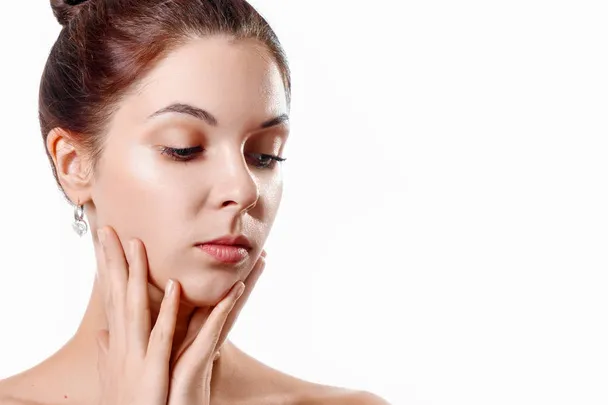How To Prevent Oily and Dry Patches with Targeted Oil Treatment, According to Our Dermatologist
Dealing with both oily and dry patches on the skin can be a frustrating challenge, often leading to an imbalanced complexion and discomfort. However, with the right approach to skincare, you can effectively address these concerns and achieve a more harmonious and healthy-looking complexion. In this article, we’ll explore how targeted oil treatments can help prevent oily and dry patches, providing insights and recommendations from dermatologists to guide you towards achieving balanced and radiant skin.
Understanding the Causes:
Oily and dry patches on the skin can stem from various factors, necessitating a nuanced approach to skincare. Oily patches typically arise from sebaceous glands that become overactive, producing an abundance of oil, also known as sebum. This excess oil accumulates on the skin’s surface, creating a shiny appearance and contributing to congestion, particularly in areas prone to oiliness, such as the forehead, nose, and chin—the notorious T-zone.
Conversely, dry patches often result from dehydration, environmental aggressors, or a compromised skin barrier. Factors like harsh weather conditions, frequent exposure to central heating or air conditioning, and the use of skincare products containing harsh ingredients can lead to moisture loss, leaving the skin feeling rough, flaky, and uncomfortable.
It’s important to note that both oily and dry patches can occur simultaneously on different areas of the face or body, highlighting the complex nature of skin concerns. Understanding the underlying causes of these issues is essential for implementing targeted skincare strategies that effectively address each concern while promoting overall skin health and balance.
By identifying the root causes of oily and dry patches, individuals can tailor their skincare routines to target specific concerns, whether it involves regulating sebum production, replenishing moisture levels, or strengthening the skin barrier. With the right approach and suitable products, achieving a balanced and radiant complexion is within reach for everyone.
The Role of Targeted Oil Treatment:
Targeted oil treatment offers a customized approach to skincare, catering to the specific needs of different areas of the face. By incorporating oils that target oily and dry patches separately, individuals can rebalance oil production, nourish the skin, and enhance overall skin health. Dermatologists stress the importance of opting for lightweight, non-comedogenic oils that mimic the skin’s natural sebum production. These oils should deliver essential nutrients without clogging pores or exacerbating oiliness. When applied strategically, targeted oil treatment can restore equilibrium to the skin, resulting in a healthier, more radiant complexion.
Preventing Oily Patches:
Preventing oily patches requires a focused strategy aimed at regulating sebum production and minimizing shine in oily-prone areas. An effective approach involves incorporating oil-targeting products into one’s skincare routine, specifically formulated to address excess oiliness. Seek out oils like jojoba oil, grapeseed oil, and tea tree oil, revered for their astringent and antibacterial properties. These oils work synergistically to regulate sebum production, reduce inflammation, and prevent breakouts without compromising the skin’s natural moisture balance. By integrating these oil-targeting products into your daily regimen, you can effectively stave off oily patches and maintain a harmonious complexion.
Combatting Dry Patches:
Addressing dry patches requires a regimen focused on hydrating and nourishing the skin to restore its moisture balance and improve texture. Emollient-rich oils play a crucial role in replenishing parched skin, delivering essential nutrients and hydration deep into the epidermis. When selecting oils for combating dryness, opt for those renowned for their moisturizing properties and ability to soothe and soften the skin.
- Argan Oil:
Argan oil stands out as a potent moisturizer, thanks to its high content of fatty acids, vitamin E, and antioxidants. This nourishing oil absorbs quickly into the skin, providing instant relief to dry, flaky patches. It works to replenish lost moisture, strengthen the skin barrier, and promote a smoother, more supple complexion.
- Rosehip Oil:
Rosehip oil is prized for its rejuvenating properties and ability to improve skin texture and tone. Rich in essential fatty acids, vitamins A and C, and antioxidants, this lightweight oil deeply hydrates the skin while helping to repair damaged tissue and reduce inflammation. It’s particularly beneficial for addressing hyperpigmentation, fine lines, and uneven skin tone caused by dryness.
- Squalane:
Squalane is a lightweight, non-comedogenic oil derived from olives or sugarcane. It closely resembles the skin’s natural sebum, making it an excellent moisturizer for all skin types, including dry and sensitive skin. Squalane forms a protective barrier on the skin’s surface, locking in moisture and preventing transepidermal water loss. It absorbs quickly without leaving a greasy residue, leaving the skin feeling soft, smooth, and deeply hydrated.
Incorporating these hydrating and emollient-rich oils into your skincare routine can effectively combat dry patches, leaving your skin feeling nourished, hydrated, and revitalized. Whether used alone or blended with other skincare products, these oils offer a natural and effective solution for addressing dryness and restoring balance to the skin.
Recommended Oil-Based Products:
Choosing the right oil-based products is essential for effectively targeting oily and dry patches while maintaining skin health and balance. When selecting products, opt for those specifically formulated to address the unique needs of different skin types and concerns. Look for non-comedogenic, fragrance-free, and dermatologist-tested options to minimize the risk of irritation or breakouts, especially for those with sensitive or acne-prone skin. Additionally, consider the overall formulation of the product, focusing on lightweight textures that absorb quickly and provide long-lasting hydration without feeling greasy or heavy on the skin.
- Serums:
Serums are concentrated formulations designed to deliver potent active ingredients deep into the skin. When it comes to oil-based serums, seek out those enriched with lightweight yet nourishing oils such as jojoba oil, squalane, or argan oil. These serums can help rebalance oil production, hydrate the skin, and improve overall skin texture without clogging pores or leaving a residue.
- Moisturizers:
Oil-based moisturizers are excellent for providing intense hydration and sealing in moisture, making them ideal for combating dry patches. Look for moisturizers formulated with hydrating oils like rosehip oil, shea butter, or coconut oil, which can replenish lost moisture and soothe dry, irritated skin. For oily-prone areas, opt for oil-free or gel-based moisturizers that provide lightweight hydration without adding excess oil to the skin. - Facial Oils:
Facial oils are versatile products that can be used alone or mixed with other skincare products to boost hydration and nourishment. Choose facial oils with a blend of hydrating oils such as marula oil, evening primrose oil, or grapeseed oil, which can help restore moisture balance and improve skin elasticity. These lightweight oils absorb quickly into the skin, delivering essential nutrients and antioxidants while leaving the skin feeling soft and supple.
Application Tips:
To achieve optimal results with targeted oil treatment, it’s crucial to apply the products correctly and with precision. Follow these application tips to effectively address oily and dry patches while promoting overall skin health and balance:
- Apply Sparingly:
When using oil-based products for targeted treatment, less is often more. Apply the products sparingly to avoid overwhelming the skin and causing congestion or greasiness, especially in oily-prone areas. Start with a small amount and gradually increase as needed, focusing on achieving even coverage without overloading the skin.
- Even Application:
Ensure that the oil-based products are applied evenly to the specific areas of concern, whether addressing oily patches in the T-zone or dry patches on the cheeks or forehead. Use clean fingertips or a gentle applicator to distribute the product evenly, avoiding excessive rubbing or tugging on the skin, which can cause irritation or sensitivity.
- Patting Technique:
For oily patches, gently pat the oil-targeting product onto the skin using your fingertips, focusing on the T-zone and other areas prone to excess oil production. The patting motion helps to distribute the product evenly while minimizing the risk of clogging pores or exacerbating oiliness. Avoid rubbing or massaging the product vigorously, as this can stimulate oil production and lead to shine.
- Massage Technique:
When addressing dry patches, use a gentle massage technique to work the hydrating oil-based product into the skin. Begin by applying the product to the affected areas using upward and outward motions, following the natural contours of the face. Massage the product into the skin using light pressure, allowing the nourishing ingredients to penetrate deeply and provide maximum hydration and relief. - Allow Absorption:
After applying the targeted oil treatment, allow the skin to absorb the products fully before proceeding with additional skincare steps. Give the products a few minutes to sink into the skin, allowing the nourishing ingredients to work their magic and address specific concerns effectively. Avoid applying makeup or sunscreen immediately after application to prevent interference with absorption.
Conclusion:
By incorporating targeted oil treatment into your skincare routine, you can effectively prevent and manage oily and dry patches, achieving a more balanced and radiant complexion. Consult with a dermatologist to determine the best oil-based products and techniques tailored to your skin type and concerns. With consistent and diligent care, you can enjoy healthier, smoother, and more harmonious skin for years to come.









